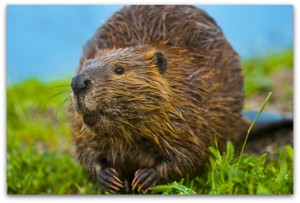
Once upon a time, a beaver’s tail was a common meal for fur trappers and pioneers in the Great White North. While the tail wasn’t the tastiest part, it was plentiful, and cooks did with them what they could. One choice was “beavertail beans.” According to Buckskin Cookery, a cookbook on how to recreate 19th century Canadian frontier dishes, it’s made by placing the fire over an open fire until the skin loosens. After removing the skin, the meat of the tail is boiled in a big kettle of beans, and then served.
Somewhere along the line, “beaver tail” also became associated with a recipe for a type of fried, sweetened dough that was easily prepared over a campfire. Because it was originally cooked in a frying pan, the end result wound up looking flat and wide, just like the tail of a certain aquatic rodent. It dates back to at least the late 19th Century, mentioned in Explorations in the Far North, an 1898 book by adventurer Frank Russell.
Since then, the beaver tail has become a snack that’s enjoyed year-round up north. There’s even a popular chain of pastry stands called BeaverTails, with locations in Canada, the U.S., and even Japan. During a diplomatic trip to Ottawa in 2009, President Obama enjoyed one.
They’re better known as elephant ears in America but they’re also sometimes called flying saucers and doughboys. Depending on where you get one, they come with tons of sugar and cinnamon or with toppings ranging from whipped cream to maple syrup and even tomato sauce.







